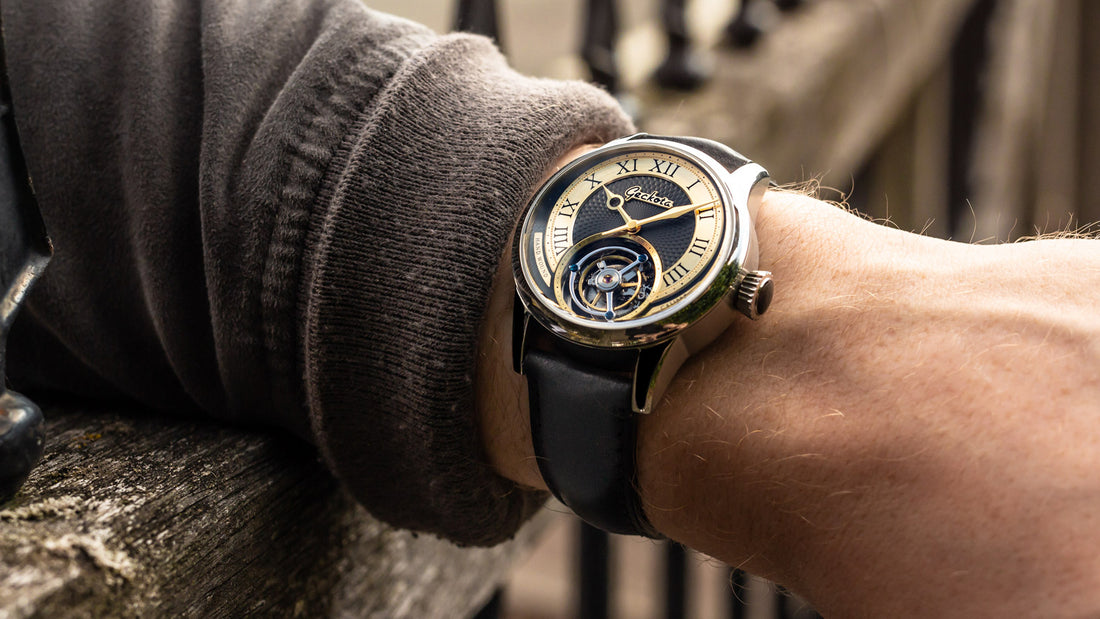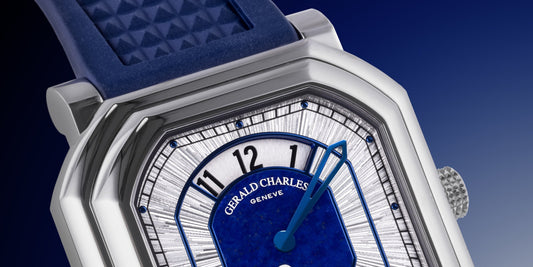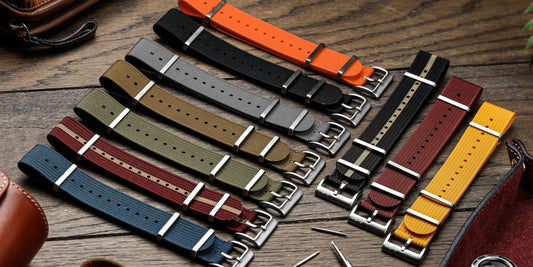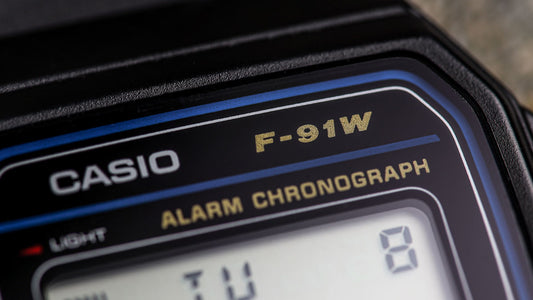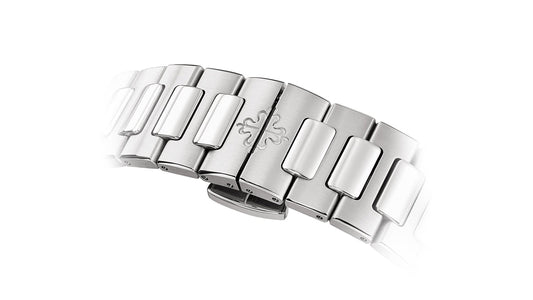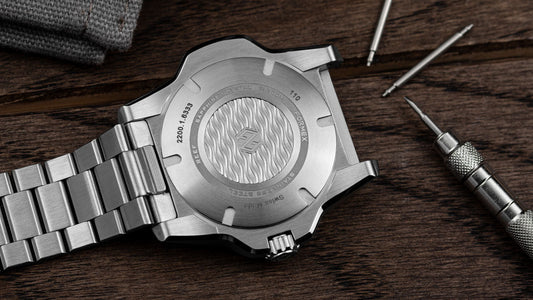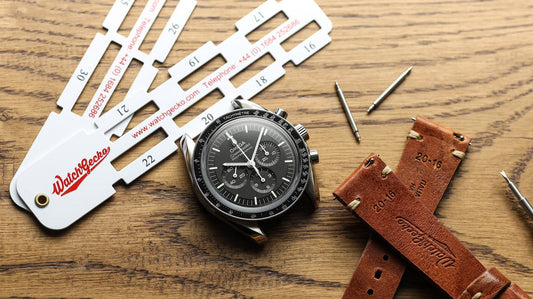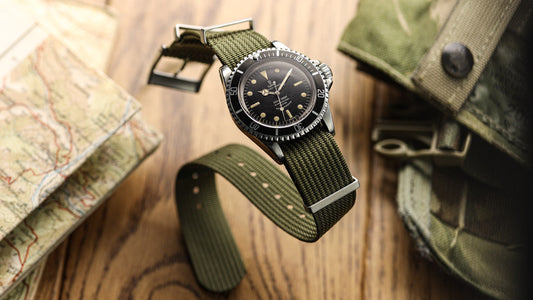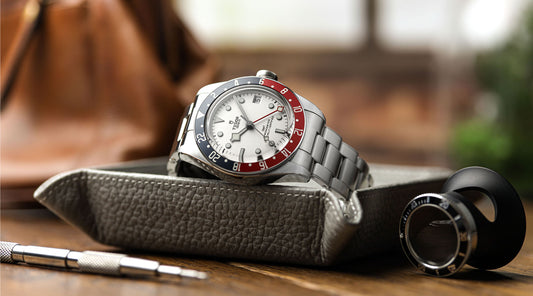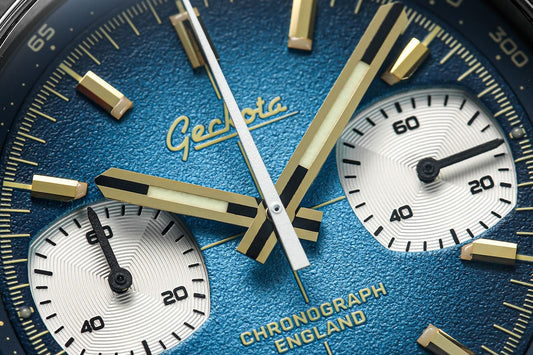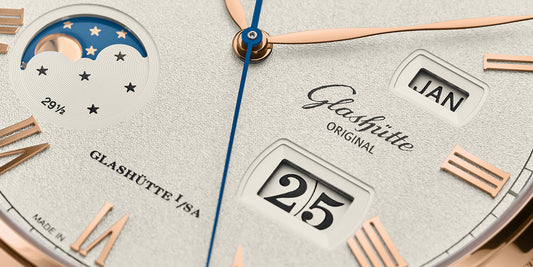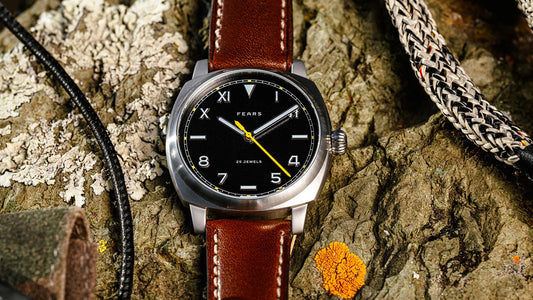Affordable tourbillon watches have never been more accessible. But what is a tourbillon movement and why should you add a tourbillon watch to your watch collection?
So what is a watch tourbillon? And why is this horological feature so significant, coveted and expensive? Let’s find out more about this complex, sophisticated micro-engineered feature whose name comes from the French for ‘whirlwind’ or, more aptly, ‘to whirl around’…
In tourbillon watch movements, the regulating system is mounted in a cage and revolves around its axis. Why? Because gravity affects watch movements’ delicate oscillating balance springs. This is particularly the case with pocket watches, which remain mostly vertical. The tourbillon counteracts this by subjecting the mechanism to a constantly changing gravitational effect that averages out rate errors.When the first tourbillon watch was invented in 1795, it was an important innovation. Subsequently, though the accuracy benefits are less clear for wristwatches, tourbillons’ microengineering and workmanship mean they’ve featured in some of the world’s most expensive luxury watches. Only now, are Far Eastern sources driving a new wave of affordable tourbillon watches…
Jaeger-LeCoultre’s Gyro-Tourbillon. Image courtesy of Jaeger-LeCoultre Press / https://www.jaeger-lecoultre.com/eu/en/home-page.html
Who invented the tourbillon?
Abraham-Louis Breguet – the king of fine watchmaking – started everything by inventing the tourbillon in 1795. He then patented it in Paris on 26 June 1801 (actually, 7 Messidor, year 1X, as the Republican calendar still applied in France).
Since then, the tourbillon has spawned many variations. There are flying tourbillons, tourbillons rotating at different rates, the double axis tourbillon, the triple-axis tourbillon and shock resistant tourbillons. There are even inclined tourbillons and tourbillon watches with one, two, or even four carriages…However, with the dominance of wristwatches and modern watchmaking developments, tourbillons’ value as accuracy enhancers has reduced greatly.
As they’ve evolved, tourbillons have gone from what Ariel Adams describes as ‘an interesting but obscure feature in mechanical watches’ to an increasingly accessible feature.
An elegant idea that’s outlived its redundancy
Until recently, this was a very expensive watch feature that peaked in popularity in the 1990s. Back then, a tourbillon was sine qua non for any luxury watchmaker’s collection. However, tourbillons have evolved from a truly ‘beautiful solution to a genuine problem’. Time has proved the tourbillon such an elegant idea that it’s outlived its own redundancy and evolved into a complex horological showpiece. Less than 20 years ago, only watchmaking’s elite were capable of making tourbillons. Indeed, ever-more refined – and more exclusive – tourbillons was a key marketing tool after the quartz crisis as Swiss watches were being reinvented as luxury products – not just timekeeping tools.
If one tourbillon said ‘I’m worth lots’, flying, multiple and multi-axis tourbillons said, ‘I’m worth lots more’. Nowadays, competitively-priced Far Eastern movements mirror general industry trends by bringing affordable tourbillons to more watch lovers than ever. Tourbillons may be relatively commonplace and increasingly accessible. Yet, though their raison d'être is long gone, the appeal of sophisticated engineering and workmanship in even a basic tourbillon endures. A tourbillon may not be essential for timekeeping, but it’s a really cool feature to have in your watch.
Image courtesy of Franck Muller Press / https://www.franckmuller.com/press-corner
So, how does a tourbillon work?
What does a tourbillon do? As Breguet discovered, gravity affects watches, but tourbillons counteracted this by averaging out errors.
Whether it’s the simplest or most complex tourbillon, this is not a complication (any timekeeping function beyond basic minutes and seconds functionality). According to Louis Nardin in The Magic of Watches: A Smart Introduction to Fine Watchmaking, it’s actually a ‘complex mechanism’ – including escapement, balance spring and regulating system – within a micro-engineered cage weighing a gram or so....
Flying tourbillons
Simple tourbillons are usually positioned between a removable bridge and the movement’s baseplate. However, on flying tourbillons the cage is usually attached at one point on the back. This gives better views of the tourbillon because the bridge isn’t present, and the tourbillon can be positioned slightly proud of the movement.
Multi-axis tourbillons
Jaeger-LeCoultre’s Gyro-Tourbillon. Image courtesy of Jaeger-LeCoultre Press / https://www.jaeger-lecoultre.com/eu/en/home-page.html
On multi-axis tourbillons, the cage itself is integrated into various rotating systems so the escapement revolves along two or three axes to better mix the different positions of the regulator. If you’re really clever, as with Jaeger-LeCoultre’s Gyrotourbillon, you then combine multiple axes with a flying tourbillon…
Multiple tourbillons
Whether multiple tourbillons actually enhance accuracy (by averaging out each other’s errors) is debatable. But what is certain is that they boost ‘wow factor’. Check out Antoine Preziuso’s acclaimed ‘Tourbillon of Tourbillons’ to see what I mean.
Why tourbillon watches are so expensive
Nowadays you can buy watches with Far Eastern sourced tourbillons for a fraction of what they once cost – a sensible starting price-point for something decent is probably around $1,500. Of course, super-luxury tourbillon watches from manufacturers such as Greubel Forsey or A. Lange & Söhne will remain unattainable by all but the super-rich.
Image courtesy of Greubel Forsey Press / https://www.greubelforsey.com/en/
Rarity, technical complexity and finishing
Tourbillons’ traditional high cost was due to rarity, technical complexity, finishing, miniaturisation and the time required to craft them. A tourbillon, it’s said, ‘takes time to measure time precisely’. On a feature designed as a centrepiece, high quality finishing is the norm on all but the cheapest. Pivots are burnished to perfection, with balance wheels unbiased, and perfectly matched to precisely coiled-and-pinned balances. Carriages require costly heat-treatment, but steel’s susceptibility to distortion means using expensive exotic alloys. Then, as well as painstaking dynamic poising and balance adjustment, everything must be precisely machined – in a field of endeavour where mind-blowing precision is already the norm.
Traditionally, there’s been another reason for tourbillons’ high prices. In an article on TAG Heuer’s 02-T tourbillon (2016), Calibre 11 says: ‘Put simply, while a tourbillon is expensive to produce, one of the reasons that they are typically priced at more than US$50,000 is because the market is willing to pay more for a watch with a tourbillon. Brands price them at a premium because they can…’
Evolution of the tourbillon watch
So the tourbillons’ original raison d'être is long gone, but it remains a coveted object of watch fans’ desire. That’s because it’s a complex, beautifully engineered device with a fascinating history. And because its intrinsic beauty and enchanting dynamism elevates normal watch movements to new levels. Because of this, tourbillons have traditionally been exceptionally expensive and very exclusive. And that, as we know, has its appeal.
From relative obscurity to the epitome of luxury
Now, however, tourbillons are more accessible. They’re no longer something that luxury manufactures maintained could only be made by the most experienced old ‘haute horlogerieres’. They’ve progressed from the relative obscurity of a specialist mechanism to the epitome of luxury. And now, to an increasingly accessible feature that can be owned for as little as a few hundred dollars.
To see how tourbillons have evolved, let’s explore some key stages in their development...
1801 to 1930s
For over a century after its invention, only a few hundred tourbillon watches were made, mainly specialist one-offs for observatory competitions. Led by pioneers such as Frederic Louis Favre Bulle and Ernest Guinand, Neuchatel’s speciality developed unobtrusively.
Image courtesy of Arnold & Son Press / http://www.arnoldandson.com
By the 1930s, wristwatches were close to outselling pocket watches and the tourbillon as reliability enhancer for pocket timepieces was virtually redundant. However, the decade saw exciting developments, including LIP putting the first tourbillon in a wristwatch. Soon, Patek Phillipe was experimenting and shortly after WW2, came the first Omega tourbillon watch in the form of the steel-cased "30 I" prototype tourbillon. However, the time for tourbillons day in the limelight of the luxury products mainstream was still 50 years away.
The 1980s: the tourbillon’s time arrives
During the 1980s, high-end horology was dominated by Swiss watchmaking’s responses to the near-disastrous quartz crisis. With the inspired reinvention of wristwatches as exclusive luxury products, the tourbillon’s golden hour approached…
In 1986, Audemars Piguet launched the first production tourbillon – their titanium Reference 25643, Cal. 2870 – after acquiring Beyner and Grimm’s work with Valjoux. Other 1980s pioneers included Vincent Calabrese and Daniel Roth who, working with Nouvelle Lemania, very appropriately put a tourbillon in a Breguet case.
The 1990s
By now, tourbillon movements were a coveted, must-have feature of the highest-end watches. Initially, mainly restricted to the longest established Swiss watchmakers, tourbillon movements soon entered the luxury watch ‘mainstream’ – and even the mid-market. It was the decade when tourbillons really came of age with watches such as George Daniels’ first tourbillon, Girard-Perregaux’s tourbillon Three Golden Bridges. Omega’s first series tourbillon, the first triple-axis tourbillon (Franck Muller), Jaeger-LeCoultre’s Gyrotourbillon, A. Lange & Söhne’s Tourbograph Pour La Mérite and Francois-Paul Journe’s tourbillon with constant force remontoire.
A significant decade for new watchmaking talent
Looking back, this was a significant decade for up and coming watchmaking talent. Working on tourbillons was key to this; it stretched technological innovation and creativity in a high profile way as watchmaker after watchmaker developed increasingly sophisticated tourbillons. From Omega’s Beyner and Grimm, to F P Journe, Vianney Halter and Christoph Claret, the tourbillon boom helped launch some of today’s most exciting watchmaking superstars…
As tourbillons really caught the mainstream imagination, they were initially pinnacles of watchmaking and arcane micro engineering feats only fully appreciated by the horological cognoscenti. However, lower component costs and bigger production scales gradually encouraged tourbillons’ wider (albeit still high end) popularity.
The must-have of luxury watchmaking
As the new millennium approached and we worried about computer Armageddon and crashing airliners, tourbillons consolidated their position as the must-have feature of luxury watchmaking. Only with hindsight, can we see how watchmaking’s golden child became what one commentator called ‘an irritating showpiece’. But not before, to luxury watchmakers’ delight, becoming a shortcut to luxury watch status and six-figure prices.
Into a new millennium
With the new decade, the tourbillon kept pushing boundaries at the upper end of luxury product development. And at the same time, the scene was being set for boom to become a new commonplace. Indeed, like a microcosm of watchmaking itself, the tourbillon market started polarising into super-luxury and a more accessible lower end. With this, traditional Swiss manufacturers found themselves walking a fine commercial line between lowering tourbillon prices and avoiding undermining brands built on a high quality, high price model.
Enter the Chinese
Whether you approve of the tourbillon’s democratisation or not, even microbrands can now offer decent tourbillon watches for less than $2,000. For that, we must thank, not Switzerland or Germany, but China. More later, but first, let’s highlight a few watches from when booming tourbillon adoption coincided with larger watch cases that could accommodate new balance mechanisms moving in three dimensions. It was also a time of forward leaps in CAD design, which made three-dimensional watch design rendering easier – another development aid to increasingly complex tourbillons. Furthermore, in 2001, the 200th anniversary of Abraham-Loius Breguet’s patent, gave the ‘Tourbillon craze’ even more impetus.
Revisiting Issue 8, 2004 of QP reminded me how Thomas Prescher wowed the industry with his triple-axis tourbillon wristwatch and Tourbillon Trilogy that year. Then, in 2006, Jaeger-LeCoultre shook the market with a steel tourbillon initially marketed at half its competitors’ prices.
The world’s most complicated tourbillon
Tourbillon innovation just kept coming. In 2008 Zenith launched its distinctive Zero-G with balance and escapement on gimbals in a unique gyroscopic cage. Tourbillons had always been complex, but with 165 components, this was the world’s most complicated. Also in 2008, Cartier launched the Rotonde de Cartier Astrorégulateur, with its vertical orientation and the escapement in a micro-rotor.
By now, some commentators say, tourbillon complexity may have peaked and ‘the exploit had become more important than accurate timekeeping’. There was another factor as, later in the 2000s, Chinese manufacturers increasingly made tourbillons available for a fraction of prevailing prices. Then, just after Baselworld 2016, TAG Heuer announced the production of its Carrera Heuer 02-T tourbillon. It featured a Swiss manufacture flying tourbillon and cost under $15k. The age of the cheap(er), good quality tourbillon watch had arrived…
Tourbillons at the state of the art
Coming up to date, here are some watches, including some of the best tourbillon watches available, that demonstrate the state of the tourbillon art. We start with two tourbillons rated highly by UK trade magazine WatchPro in its 2017 awards.
Richard Mille RM 50-03 Tourbillon Split Seconds Chronograph Ultralight McLaren F1
With each carbon and graphene cased RM 50-03 weighing under 40 grams, Richard Mille claims that it’s the lightest mechanical chronograph ever made – and a tourbillon to boot! It must be good; all 70 sold at over $1m each before the official launch!
Arnold & Son Tourbillon Chronometer No. 36
Image courtesy of Arnold & Son Press / http://www.arnoldandson.com
WatchPro also praised this watch with its traditional tourbillon construction top bridge. At around $50k, it’s positively affordable compared to the Richard Mille.
Vianney Halter Deep Space multi-axis tourbillon
Image courtesy of Quill & Pad and GaryG - https://quillandpad.com/2014/07/15/why-i-bought-it-vianney-halter-deep-space-tourbillon/
From 2013, another distinctive tourbillon is Vianney Halter’s whimsical-but-horologically-serious Deep Space multi-axis tourbillon – stunning, bonkers and completely brilliant.
Greubel Forsey Vision Tourbillon 24 Secondes
Image courtesy of Greubel Forsey Press / https://www.greubelforsey.com/en/
No tourbillon article would be complete without referencing Greubel Forsey. Check out this beauty, which QP’s James Gurney described thus in Issue 71: ‘There is literally no single element to the watch that deserves any but the most arcane of criticisms.’
Girard-Perregaux Neo-Tourbillon Skeleton Three Bridges
Image courtesy of Girard-Perregaux Press / https://www.girard-perregaux.com/en
With SIHH 2018 still fresh in mind, one of Geneva’s attention-grabbers was this Girard-Perregaux with its signature trio of black bridges spanning the skeletonised GP 09400-0011 mechanism. The result? A stunning contemporary take on GP’s signature, 150-year-old triple bridge – a bargain at just $138k…
Richard Mille alloy RM50-02 ACJ
Image courtesy of Richard Mille Press / https://www.richardmille.com/
Back to Richard Mille to indulge my passion for anything aerospace-related with the contemporary, titanium-aluminium alloy RM50-02 ACJ developed with Airbus Corporate Jets. I love the bright colours, aircraft-instrumentation-inspired movement details, ‘aircraft porthole’ bezel and wheel inspired crown. If I could own just one Richard Mille...
Franck Muller Giga Tourbillon
Image courtesy of Franck Muller Press / https://www.franckmuller.com/press-corner
Franck Muller says this is the biggest tourbillon ever included in a watch movement. It’s an impressive 20mm in diameter; half fills the watch face, and requires four barrels for power and its impressive nine-day power reserve.
Angelus U40 Racing Tourbillon Skeleton
Image courtesy of Angelus Press / http://www.angelus-watches.com/en-us/urban-collection/u50-diver-tourbillon/
In the U40, a relatively affordable tourbillon marries the exclusivity of a tiny specialist brand with an aesthetic that Quill & Pad reviewer Martin Green described as ‘futuristic old school’. All for under $30k.
Royal Oak Offshore Tourbillon Chronograph 25th Anniversary
Image courtesy of Monochrome Watches / https://monochrome-watches.com/
Back to SIHH 2018 again. AP’s 25th Anniversary Royal Oak Offshore Tourbillon Chronograph is another watch that’s not for the shy. Then again, the Royal Oak, one of the most distinctive watches, was never understated. Not only is it arguably the watch that created the trend for big, bold, luxury sports timepieces in the 1990s. It’s also from the brand that introduced the first series production tourbillon in 1986.
Seiko Credor FUGAKO Tourbillon (Limited Edition)
Image courtesy of Deployant / https://deployant.com/
Seiko has traditionally eschewed tourbillons, so it was a surprise when their Credor FUGAKO Tourbillon – Seiko’s first – appeared at Baselworld 2016. Just look at how this Japanese tourbillon sublimely combines high-level traditional watchmaking, traditional Japanese decorative arts techniques and Edo Period The Great Wave Off Kanagawa imagery.
Schwarz Etienne La Chaux-de-Fonds Tourbillon
Image courtesy of Monochrome Watches / https://monochrome-watches.com/
Now to invoke writer’s privilege and enthuse about Schwarz Etienne’s lovely La Chaux-de-Fonds Tourbillon that I saw at Baselworld 2017. I love Schwarz Etienne’s passion and authentic watchmaking heritage. And the welcome they gave a Baselworld first-timer while showing me their three mainstay collections: Roma; the intriguing UFO-inspired Roswell; and the La Chaux-de-Fonds Flying Tourbillon. Powered by their in-house Irreversible" TSE 121.00 with micro-rotor. Schwarz Etienne has a great story, beginning in 1902, through their 2000s renaissance in the 2000s and looking optimistically to the future. They’re a true Swiss manufacture and one of relatively few Swiss companies making their own balance springs too.
The future of the tourbillon watch
So where next for tourbillon watches? They’re undoubtedly here to stay and more accessible than ever. Of course, at the meta-luxury end of the market, they’ll continue to be appreciated for their amazing engineering as well as ultra-luxury characteristics.
The biggest changes are already apparent at low- to mid-levels, where low-cost, often-excellent quality, Far Eastern tourbillons seem destined to keep making inroads. Established watchmakers will continue to navigate carefully between offering lower price tourbillon watches and devaluing centuries-old brands that have always commanded high prices. But even when the likes of TAG Heuer introduce tourbillon watches below $15k (and publically claim to still make fair margins) it’s still at a different price-point to anything with a Chinese tourbillon.
The democratisation of tourbillons continues
The democratisation (or devaluation, depending on your viewpoint) of tourbillons is just another manifestation of our current watchmaking world. It’s a world where you can pay tens of thousands for a luxury watch, or hundreds for an excellent microbrand that performs as well, but without big-brand price, and heritage.
One certainty is that tourbillons will continue to become more accessible. Chinese manufacturers are now influential providers of affordable tourbillons to lower end volume brands and microbrands such as Geckota – and for sure, the best Chinese tourbillon is yet to come. And all for a fraction of even a ‘budget’ Swiss tourbillon such as TAG Heuer’s 02-T. It’ territory that’s hard to imagine the Swiss wanting to, or able to, enter – and it won’t go away. So the Swiss will doubtless continue to concentrate on the exquisite hand finishing that adds so much value to high-end watches. And focus on the arguably more interesting ‘grand complication timepieces that the Chinese don’t (yet) make.
Unattainability rather than intrinsic virtuosity?
However, with such affordability comes the likelihood that we must confront the reality that tourbillon watches’ appeal came more from unattainability than intrinsic technical virtuosity. As Adi Soon pointed out in aBlogToWatch, perhaps a market flooded by cheap Chinese tourbillons will mean more people will become familiar with them and their appeal will wane. But before that, there’s an opportunity for those of us who can’t afford a megabucks tourbillon watch, to experience this and decide for ourselves.
To be honest, forget ‘tourbillon watches’ at the very lowest price points. The cheapest tourbillon watch you’ll find probably isn’t a ‘proper’ tourbillon – just an ‘open heart’ watch. Instead, look around $1,000 to $1,500. Here, at maybe a tenth of the price of TAG Heuer’s Carrera 02T, Chinese manufacturers and reputable microbrands using their tourbillon movements deserve your attention.
Ride the third wave
At the high end, those who can afford astronomically expensive watches will still pursue the latest pinnacles of watchmaking, microengineering and value-adding finishing – whether that means tourbillon or not. For some, the new accessibility of tourbillons may reduce their appeal and prompt a search for new objects to adore.
At the market’s high end, established names will surely find further tourbillon innovation irresistible. As Ariel Adams wrote in Forbes in 2012, ‘The highest-end Swiss tourbillon watch will always have a special status and cache [sic] among the world’s “in the know” elite.’ In the same article, he also pointed out that the Chinese can produce 90% of the Swiss quality for one-tenth of the price of a Swiss watch…
But for thousands, or millions, of watch buyers with lower budgets, this new affordability, and value, opens up previously unthinkable ownership possibilities. The first wave of tourbillon appreciation was for those long-ago observatory competitions. The second was the 1990s and 2000’s luxury watch boom. Now the third wave is upon us. And on it, a new cadre of enthusiasts will be able to enjoy tourbillons rather than just seeing them in watch magazines or online articles.
Welcome to the affordable tourbillon watch generation
Again, I find myself contemplating the notion of an idea whose beauty and elegance has outlived its redundancy. Yet, for the tourbillon to survive and prosper so long after its original reason-for-being disappeared bodes well for its future. Nowadays, whether it’s a million-dollar luxury timepiece, or a simple tourbillon executed affordably, tourbillons remain seductively engaging marvels of micro-engineering – and cool watch features.
If you’ve never been mesmerised by a tourbillon’s dynamism, try it sometime, but prepare to be hooked! Welcome to the new affordable tourbillon watch generation!
